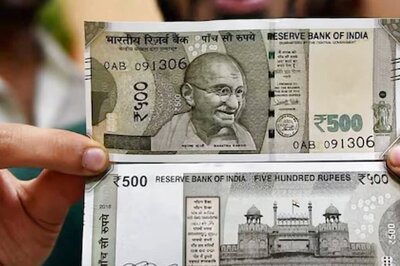
views
New Delhi: Many areas in the Delhi-National Capital Region recorded air quality in the "very poor" category on Wednesday morning, with particulate matter less than 10 micrometers in diameter being the primary pollutant.
Delhi's overall Air Quality Index (299) also bordered "very poor" levels. On Tuesday, it stood at 270 at 4 pm.
Seventeen of the 37 air quality monitoring stations in the national capital recorded the overall AQI in the "very poor" category, according to data of the Central Pollution Control Board.
The AQI at Mundka, Dwarka Sector 8, Delhi Technological University, Anand Vihar, Wazirpur, Rohini, Bawana, Ashok Vihar, Nehru Nagar and Jahangirpuri was 368, 362, 355, 328, 323, 323, 320, 319, 319 and 318. Other areas that experienced very poor air quality included Alipur (314), Narela (312), Vivek Vihar (311), Sirifort (309), CRRI - Mathura Road (304), Okhla Phase 2 (303) and ITO (302).
The neighbouring areas of Ghaziabad (337), Loni Dehat (335), Noida (318) and Greater Noida (308) also recorded a spike in pollution levels.
An AQI between 0 and 50 is considered 'good', 51 and 100 'satisfactory', 101 and 200 'moderate', 201 and 300 'poor', 301 and 400 'very poor', and 401 and 500 'severe.
The Centre-run System of Air Quality and Weather Forecasting and Research (SAFAR) had on Tuesday noticed an 'increasing trend" in stubble burning incidents in neighbouring states and predicted that the share of crop residue burning in Delhi's PM2.5 concentration would be around 6 per cent on Wednesday.
The Delhi government had also shared showed pictures and data from NASA that large-scale stubble burning in areas surrounding Delhi.
On Tuesday, Delhi Environment Minister Kailash Gehlot also wrote to Union Minister for Earth Sciences Harsh Vardhan requesting access to SAFAR's data so that the administration could take immediate corrective measures to curb pollution.
Biomass burning is likely to contribute 9 per cent to Delhi's PM2.5 concentration on October 15, the Centre-run System of Air Quality and Weather Forecasting and Research (SAFAR) said.
Prepared by the Central Pollution Control Board and first implemented in Delhi-NCR in 2017, Graded Response Action Plan (GRAP) to curb air pollution came into force on Tuesday. It lists measures to curb air pollution according to the severity of the situation.
This year, GRAP will witness the return of Delhi government's odd-even car rationing scheme from November 4 and the extension of the ban on diesel gen-sets to NCR cities of Gurgaon, Ghaziabad, Noida, Greater Noida, Faridabad, Sonepat, Panipat and Bahadurgarh
Earlier, the Supreme Court-mandated Environment Pollution (Prevention and Control) Authority had said that local sources of pollution, including stack emissions, dust, and burning of plastic and rubber waste, were the primary reason for deteriorating air quality in Delhi-NCR.




















Comments
0 comment